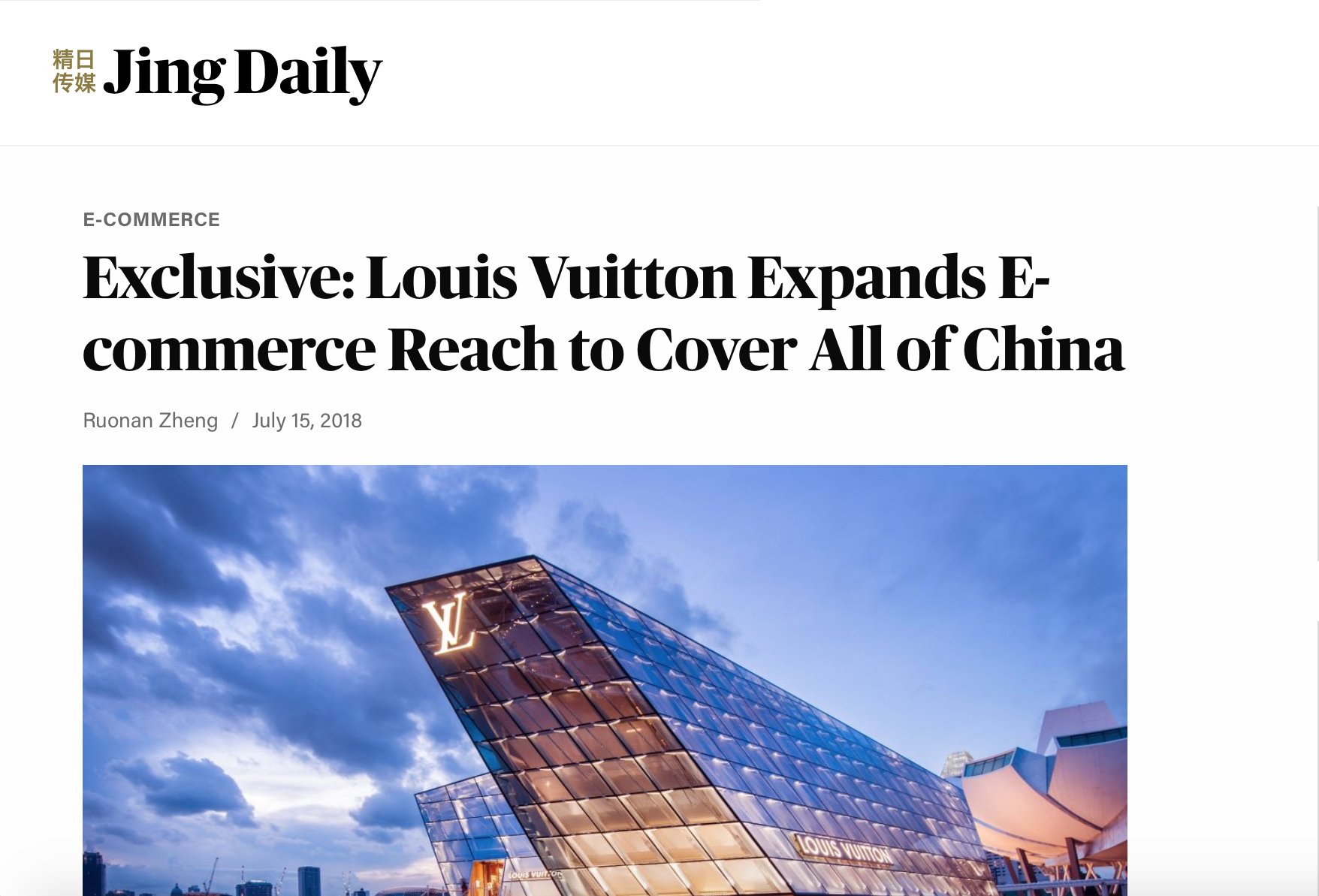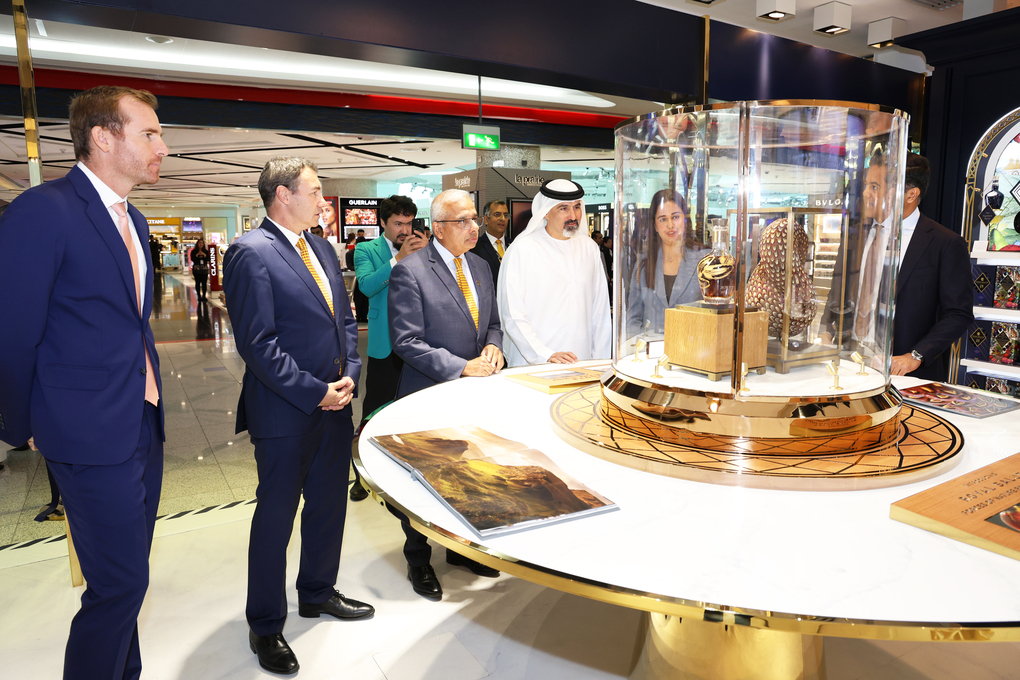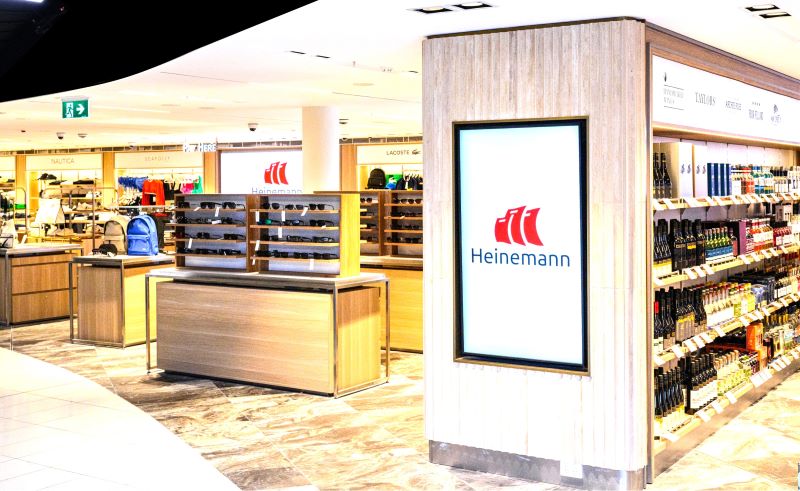INTERNATIONAL. Moodie Davitt NEXUS brings you a weekly curated summary of (and links to) key stories from the related worlds of travel, retail, luxury, brands and beauty. All have been chosen for their relevance to (or repercussions for) travel retail.
NEXUS is available on dual platforms, first via a weekly e-Newsletter and later here at The Moodie Davitt Report.com, which enjoys almost five times the monthly web traffic of its nearest rival.
#01 – Jing Daily
Louis Vuitton Expands E-commerce Reach to Cover All of China

The Moodie Davitt Report’s business information partner Jing Daily consistently provides some of the most timely and incisive analysis of the Chinese travel, luxury, retail and digital media worlds. If you’re not reading Jing Daily or sister title Jing Travel, you really should be. Here, journalist Ruonan Zhang reports how just one year on from Louis Vuitton China’s e-commerce launch, the French luxury powerhouse has rolled out its services to all major cities throughout the Mainland, effective 15 July. This means consumers from smaller cities will also be able to enjoy the brand’s premium delivery service and convenient 7-days return policy.
That’s a profound indicator of where the great French brand sees the future for China. It’s Digital with a capital D, Online with a capital O and e-commerce with a capital E. Get the picture?
Soundbites: A report released in June by Bain predicted that sales of luxury goods will grow between 20 and 22 percent in mainland China this year, at least doubling the rate of growth anywhere else in the world. As the Chinese government continues to enforce policies to boost domestic consumption, ramping up online offerings in China is certainly one way for luxury brands to get ahead.
Full story: https://jingdaily.us1.list-manage.com/track/click?u=555a04b48e1f20aecf5db4d61&id=1d26ede95b&e=e60f9932d2
#02 – The Times
Claudia Winkleman on airport shopping and the Chanel arm cuff you need
 A consumer article that praises duty free? Really? Yes and what’s more it comes from one of Britain’s most influential consumer voices writing in one of the country’s top media.
A consumer article that praises duty free? Really? Yes and what’s more it comes from one of Britain’s most influential consumer voices writing in one of the country’s top media.
That was then, according to Ms Winkleman…. Duty free used to be chronic, didn’t it? Old Charlie perfume bottles stacked precariously on a dodgy pyramid display made out of mirrors, and a hilarious shop dedicated to ceramic red post boxes. The make-up area was stocked with the right names — YSL, Lancôme, Clinique — but never quite the right stuff. Things had to be bought together — you can have this eye pencil, but only if you get this toner. The well-known creams had run out and the popular eyeshadows (grey, neutral) and lipsticks (red, nude) had been swapped for green eye pencils and coral gloss. Like, you’re going away and you’ll want to look like a brightly coloured clown. Here, try our new cyan mascara, it’s jaunty and will look good in Malaga! We can’t shift it in Selfridges, but this will just walk out of here! Can I interest you in a yellow eyeshadow, madam?
And now… And then, all of a sudden (it feels like overnight), duty free became the best place for fashion. “Babe, our flight is at noon, shall we get to the airport just an hour before?” Um, no, mate, we need at least an hour for breakfast and I need to get a Bottega clutch and some Hermès slides (I’m pretending here, but you get the gist).
Soundbites: While department stores are now too busy, too complicated (how come denim is next to TVs, but flip-flops are five floors up? Do you not know how shopping works?), and big malls are so huge, you need a Fitbit and an endurance protein bar just to navigate one floor, the airport is the best place to invest.
The destination is the least interesting thing about going away now. Get to the airport early and have fun. There’s a Tiffany, a Yo! Sushi (chicken teriyaki is actually what we should all eat, all day long) and a massive Dixons Carphone. There are travel games for kids and a million dot-to-dot choices; there’s a Gucci if you’ve “accidentally” left your sunglasses at home. The beauty brands are stocked with black eyeliner and fantastic unguents and the people there are adorable and happy to help. This mascara is better, try it. Yellow eyeshadow? Nah, we don’t make those any more.
Duty-free, then, fashion’s new epicentre. See you there.
#03 – Express.com
Holidays 2018: Duty free is now MORE expensive than online shopping

But just to show that the consumer media appetite for eviscerating the airport retail business hasn’t gone away, here comes another shock, horror, ‘duty free’s a rip-off’ story from the online incarnation of The Daily Express. And if the reader were in any doubt as to the slant of the story the use of capital letters in the word MORE makes it easy for them. Nothing new here then, nor are any of the findings. But while it may be a typically facile piece on duty free, the article once again underlines the perennial difficulty that travel retail faces in terms of pricing perception.
It cites ‘research’ from price and product comparison service PriceSpy, which shows that only 10 percent percent of products are cheaper at the airport, compared to online. PriceSpy studied duty free prices gathered at Heathrow Boutique (actually an online site), Gatwick, Stansted, Manchester and Bristol – all involving World Duty Free.
Soundbites: The best savings to be found online versus at duty free were for electronics and men’s fragrances. Larger savings can be made online on men’s fragrance, with an average saving of £12.52, compared to £8.47 on women’s. An average saving of 35 per cent was found online on men’s Hugo Boss Bottled Night EDT 100ml, compared with the duty free price at Bristol, Gatwick and Heathrow.
Full story: https://www.express.co.uk/travel/articles/991300/duty-free-prices-airport-heathrow-gatwick-online-shopping
#04 – Vogue India
15 beauty brands that are working hard to meet millennial needs

An interesting take from an Indian Millennial on how she looks at beauty – more of a list of hot brands than a real trend watch but intriguing nonetheless.
The article contends that millennials are shaking things up for beauty brands, redefining the space and moulding the business to personalised choices. Whether it’s the demand for all-natural beauty products, the ‘less is more’ approach, or the importance of multi-tasking and quick-fix wonders, brands are working hard to cater to the unique needs of the millennial generation. The author lists 15 brands that seem to be getting it right.
Soundbites: Bite Beauty: The millennial mark – With ‘lip labs’ where their consumers can custom-make their own lipsticks, Bite Beauty is based on a simple idea—“what you put on your lips should be as good as what you put in your mouth”. They like their beauty to be clean, pure, unprocessed and safe and have a line of lip products solely made from all-natural, food grade ingredients, embracing food-inspired formulations.
For full story: https://www.vogue.in/content/15-beauty-brands-that-are-working-hard-to-meet-millennial-needs/
#05 – Skift
Norwegian Cruise Line is moving its built-for-China ship to the U.S.

Skift can be relied on for thoughtful, often provocative takes on all aspects of the travel sector. This piece is a typical example, challenging what has almost become accepted wisdom that the China cruise business is set for a relentless boom. The story relates how one leading company, Norwegian Cruise Line is winding up, not down, its capacity in China.
Soundbites: After years of rapid expansion, several cruise lines have lowered their China capacity this year amid forced itinerary changes and pricing struggles, sending ships to destinations with more favorable conditions.
For full story: https://skift.com/2018/07/18/norwegian-cruise-line-is-moving-its-built-for-china-ship-to-the-u-s/
#06 – Jing Daily
The Future of Luxury: First Comes the App, Then Comes the Store

Great headline, great article. Lauren Hallanan writes that commerce is changing in China at rates unseen in any other market. Possibly the biggest change, she says, is in the attitudes and shopping behaviours of modern Chinese consumers. These shoppers demand the kind of convenience technology can provide, yet are increasingly seeking meaningful ways to engage with brands in the real world.
Despite China’s love of online shopping, e-commerce platforms have discovered that – to meet the needs of modern Chinese consumers – having an online presence is no longer enough.
On 16 June, China’s popular social e-commerce platform Xiaohongshu (RED) became one of the first of the smaller e-commerce players to join the giants in their journey into brick-and-mortar, by launching its first offline store RED Home in Shanghai. In just a couple of weeks, the store has proved popular with Xiaohongshu’s loyal online user base.
The store is a case study in the future of retail and how to create a space specifically designed for the young, modern Chinese consumer, incorporating the major trends of Chinese retail.
- Socialization and community
- Technological Integration
- Experiential
Soundbites: Interestingly, in an interview, Xiaohongshu shared that the staff responsible for designing the store had no previous offline retail experience. Instead, it was their years in online retail – especially in the fashion and beauty industries – that led them to think outside the box when it came to the store’s layout, décor and technological integration.
RED Home offers some key insights into the future of retail in China, showing how offline retail spaces can be designed in order to capture the attention of young Chinese consumers, integrating technology in a way that complements the behaviours of a brand’s target audience.
For full story: https://jingdaily.com/future-luxury/












